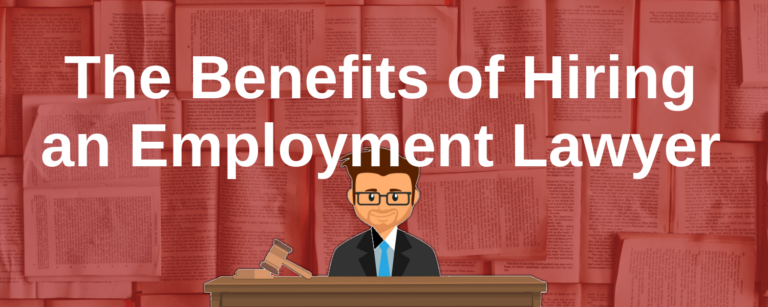
Justin W. Anisman is an Employment Lawyer and principal of Anisman Law. Justin advises both companies and individuals in all aspects of employment law including wrongful dismissal, human rights and discrimination.
“Constructive Dismissal” is defined as a substantial and unilateral change to the terms or working conditions of employment. In other words, a constructive dismissal describes situations where, although an employer has not directly fired an employee, its actions or its failure to address issues, leaves an employee feeling like they have no choice but to resign. Another way to think about constructive dismissal is that it arises when an employee has a good reason to quit their job.
A relocation of the workplace from Toronto to India is a clear example of a substantial change. The determination becomes more nuanced and complex, however, in less obvious situations. For example:
As you may have guessed from the definition of constructive dismissal, when deciding whether an employee has been constructively dismissed, the Courts have to decide whether the change in employment was “substantial”.
Determining what is a substantial or fundamental change to an employment agreement depends on facts and circumstances. The burden to prove that the facts and circumstances amount to a substantial change in employment is on the employee.
To provide guidance on the meaning of substantial in the context of a constructive dismissal, this article will look at the three situations in which constructive dismissal can occur:
In the eyes of the Court, employers are generally entitled to make minor unilateral amendments to employment terms when those changes are reasonable and/or contemplated as part of the employment agreement. The Courts do recognize that employers should be allowed some flexibility in structuring jobs as part of their authority in managing the business.
In deciding whether the change is substantial, the Courts apply an objective legal analysis. This means it doesn’t matter what the employee believes happened. The Court looks at the facts and circumstances and asks if a reasonable person in the employee’s shoes would find that the terms of employment had been significantly altered by the employer. They consider the nature and extent of the changes with specific attention and consideration to the intention of the parties at the time the employment contract was formed.
To prove constructive dismissal, the key is to be able to demonstrate that the change(s) were severe enough that a fundamental part of the agreement was altered.
Some of the “substantial” changes taken by employers might look like:
Another example of a substantial change could be an unpaid suspension or layoff. As I discussed in more detail in Temporary Layoffs: What Everyone Needs to Know, employers are not allowed to layoff employees when it isn’t a written term of their contract or a standard industry practice. Accordingly, being laid off in almost every instance is a constructive dismissal.
Employers are required to provide a safe and healthy work environment and that obligation is legally regulated through Ontario occupational health and safety legislation. An unsafe or unhealthy work environment may result in an employee being constructively terminated.
In cases of poor work environments, the Court will consider the facts and circumstance and apply an objective test. Is the workplace so unsafe, hostile or toxic that a reasonable person would not be expected to return? If the answer is yes, then the employee was constructively dismissed.
The following are some of the factors that will be considered to determine if constructive dismissal has occurred:
A good example of a toxic work environment is one in which the employer fails to prevent workplace harassment or bullying. Other examples include workplaces where unjustified criticism or vague and unfounded accusations of poor performance (especially by persons of authority) exist, a culture where sexism or racism is tolerated (if not actively encouraged), or where an employee is subject to extreme stress and unreasonable expectations or demands.
Although minor changes will not amount to constructive dismissal, a series of small changes might. The key is that the extent of the changes made to the terms of employment must add to a total change that is substantial or makes the employee feel that the employer is trying to have them quit.
For example, an employer might make a minor reduction in salary in January, then reduce employee benefits in March, then a small reduction in hours in April, perhaps then a restructuring to change an employees role to have less overall responsibility in July.. The total effect of those changes may add up to a substantial change to the terms of employment.
An employee’s options in the face of a potential constructive dismissal are set out by the Ontario Court of Appeal in a case called Wronko v. Western Inventory Service Ltd. (which I’ve written about before in How to Change Employment Contracts). Those options are:
If an employee decides to continue to work under changed conditions, they may not be able to bring the matter to the courts at a later date. This legal principle is called condonation. If an employee condones the change through conduct, then they have implicitly accepted the change.
Usually, to claim constructive dismissal the employee actually has to quit and then sue. In this respect there is always a risk to the employee who makes a claim for constructive dismissal. If the employee is not able to prove that they have been constructively dismissed, then they will be found to have resigned from their employment. Having resigned, the employee will not be entitled to any damages for wrongful dismissal.

Justin W. Anisman is an Employment Lawyer and principal of Anisman Law. Justin advises both companies and individuals in all aspects of employment law including wrongful dismissal, human rights and discrimination.
Contact Justin W. Anisman, the author of this blog, about any employment law related questions or issues you may be facing.
Justin W. Anisman can be reached by phone or email 24 hours a day and is always available for a free in person or telephone consultation.
2 responses to “Constructive Dismissal: A Good Reason to Quit”
[…] my article on Constructive Dismissal for more information on what can amount to a constructive termination in […]
[…] my article on Constructive Dismissal for more information on what can amount to a constructive termination in […]